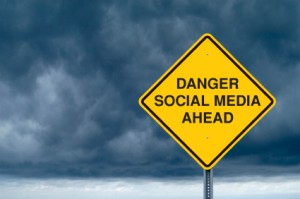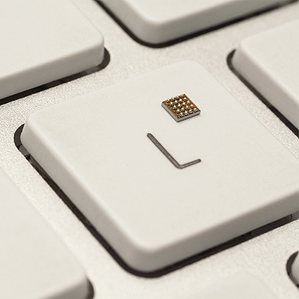Local, Personal, Social, and Always On
 The Boston Consulting Group (BCG) just published a new study that compares 16 industries in their ability to deliver digital satisfaction to American consumers. What’s the worst industry? The telco/cable industry is at the bottom of the heap. What’s the best industry? Surprise … it’s personal banking.
The Boston Consulting Group (BCG) just published a new study that compares 16 industries in their ability to deliver digital satisfaction to American consumers. What’s the worst industry? The telco/cable industry is at the bottom of the heap. What’s the best industry? Surprise … it’s personal banking.
BCG surveyed 3,135 consumers in March 2013 and measured satisfaction with 17 different digital “interactions”. These were grouped into four broad categories:
- Research – interactions include the ability to find information quickly and easily, the ability to find better prices, etc.
- Transactions – the ease of making the transaction, the ability to buy what I need, etc.
- Post-transaction activities – including social features, customized communication, and mobile access.
- Other – including quick access to help and the degree to which I trust this transaction.
The researchers asked consumers to rate each interaction in two ways: 1) how important is it?; 2) how satisfied are you with it? With these data, we can compare expectations and how well those expectations are met.
The researchers crunched all the data and compiled the 16 industries into four categories:
Leaders – consumers had high expectations of leaders and, by and large, their expectations were met. In general, the leaders scored well across all four interaction categories, from beginning to end. (Actually, the process never really ends). The four leading industries are (in order) personal banking, online merchants, media retail, and electronics retail. Personal banking leads by a wide margin, with a total satisfaction score of 15.2, compared to 11.8 for online merchants, the second ranking industry.
Aspirants – these industries do well on the research interactions but lag on the transaction and post-transaction categories. In other words, they get off to a good start but don’t follow through well. Consumers are not displeased with aspirant performance but think it could be improved. Industries in this category are: apparel retail, airlines, investments, and hotels.
Sleepers – consumers have low (digital) expectations of sleeper industries … and those expectations were fulfilled. Sleeper industries are: supermarkets, automobiles, and real estate.
Laggards – consumers have higher expectations of laggards (than of sleepers) but low satisfaction. Laggards fall behind in all interaction categories, from research to post-transaction. Laggards include: utilities, government services, health care providers, insurance, and (worst of the worst) telco and cable
Consumers want the digital experience to offer more than the physical experience. Digital might offer more options, more information, better prices, or more convenience. It might even be fun. Generally, consumers “expect the digital experience to be local (recognizing where they are), personal (tailored to their individual needs and preferences), social (shared with their friends) – and always on.”
The study also points to the growing importance of mobile access. Roughly half of Millennials (born 1980 – 2000) use mobile devices while shopping. For older consumers, the rate is approximately one-fifth. Mobile access enables two key trends:
Showrooming – check out the merchandise in a brick-and-mortar retail outlet, then compare prices and buy online.
Omnichannel – use the entire array of online, mobile, virtual, social, and real world channels to make a buying decision.
As the authors point out, the purchasing process is no longer linear; it’s now fluid and dynamic. To succeed, companies will need to enhance satisfaction through the entire range of interactions and do it through all channels. It’s a daunting challenge. The reward, however, is a slice of the $450 billion e-commerce market that BCG projects by 2016.
Creativity and Caffeine

Gosh, I’m feeling so creative.
Last December I wrote a brief article asking, Are You More Creative When You’re Sleepy? The general idea is that you’re less likely to stick to nonproductive routines when you’re tired. Let’s assume that you know the “right” way to do something. When you’re fresh and energetic, you may repeat the process multiple times, even if it doesn’t work well. You’re more likely to assume that the process is correct but you’re making a mistake. Thus, you repeat the process, expecting to correct the mistake and achieve success. When you’re tired, you’re more likely to give up, and try something different — perhaps something more creative.
This week The New Yorker has an article looking at the same phenomenon from a different perspective. The question: does caffeine inhibit creativity? Caffeine tends to stimulate and focus the mind. If you’re more creative when you’re tired — because your mind wanders — then caffeine should reduce your creativity.
Maria Konnikova — who wrote Mastermind: How To Think Like Sherlock Holmes — wrote The New Yorker article and it’s well worth a read. Even if you’re not interested in creativity, you’ll be fascinated with the way Honoré de Balzac inhaled ground coffee dust because the brewed stuff just wasn’t strong enough.
Nothing Buttists and Physics Envy

It’s so precise!
Physics is beautiful. It’s precise, it’s elegant, it’s mathematical, and it explains and predicts. If you know the inputs, you also know the outputs.
Perhaps that’s why so many other sciences (and pseudo-sciences) seem to have physics envy. Envious sciences can’t simply explain; they also have to predict. That’s where they get into trouble.
Take economics. It used to be about markets and policies and people and behavior. Then it succumbed to physics envy and grew (in my opinion) far too fond of calculus. Economists seemed to think that calculus would provide the same predictability as physics. Just remove the human element, forget the politics, and focus on the math. As Roger Lowenstein writes, “The modern economist employs mathematics as a badge of neutrality.” We should all be thankful that Daniel Kahneman et. al. have restored human behavior to economics.
Physics envy seems to have invaded neurology as well. As David Brooks points out, we now have “nothing buttists” – humans are “nothing but a bunch of neurons.” Taking this view supposedly leads to predictability. Indeed, Adrian Raines believes that we can predict violent crime. (My low heart rate may consign me to jail).
Ultimately, I think it’s all just silliness. Professors are trying to put the gloss of scientific certainty over their incomplete theories. They’re trying to predict what humans will do with precision and certainty because that’s what physicists do. Fortunately, humans don’t behave like subatomic particles. Life is unpredictable – that’s what makes it fun. Just remember to eat dessert first.
Is The Internet Of Things A Giant Brain?

Would you swallow it?
In The Social Animal, David Brooks writes that, “We are living in the middle of a revolution in consciousness. Over the past few years, geneticists, neuroscientists … and others have made great strides in understanding the building blocks of human flourishing. And a core finding … is that we are not primarily the products of our conscious thinking. We are primarily the products of thinking that happens below the level of awareness.”
Further, “If the conscious mind is like a general atop a platform who sees the world from a distance and analyzes things linearly and linguistically, the unconscious mind is like a million little scouts. The scouts careen across the landscape, sending back a constant flow of signals and generating instant responses.”
Now here’s how Tim Simonite, writing in Technology Review, describes a two-millimeter square computer (pictured): “If the Internet is to reach everywhere – from the pills you swallow to the shoes on your feet – the computers will need to get a whole lot smaller. A new microchip that is two millimeters square and contains almost all the components of a tiny functioning computer is a promising start.”
Simonite describes the technical challenges of creating a swallowable computer the size of an ant. I won’t try to summarize the technical issues. For me, the bigger issue is simple: don’t swallowable, ant-sized computers mimic a “million little scouts?” Are we building a giant brain here? If so, what are we going to do with it? Does the NSA get to run it?
Jobs We Won’t Need

Sorry. Your skills are no longer required.
Last week, I asked, Should We Work? and discussed the issues of job elimination over the next 50 years. Here’s a terrific article from Technology Review about how the process works. And, here are my fearless predictions of just some of the jobs that will disappear over the next 50 years. I’ve also included my predictions for the types of jobs that we will still need. It’s not a long list.
Drivers – autonomous vehicles will replace cab drivers, truck drivers, and bus drivers. Tell the vehicle where you want it go and it will take you there.
Surgeons – if a robot can make micro-welds in the factory, it can also replace your heart valve. A robot’s hands don’t shake.
Computer programmers – computers can program computers faster than people can.
Doctors – computers can diagnose what’s wrong with you better than humans can. Humans might have a better bedside manner, but avatars accompanied by a cute puppy are close… and they’re always on call.
Pilots – drones can do a better job, especially in fighter jets. The weak link in military aircraft is the human. Without a human, we can build faster, more maneuverable, and much, much cheaper warplanes.
College professors – MOOCs will rule.
Room service staff – why order in when you can order out?
Accountants – accountants interpret rules and enter data. Computers can do that.
Stockbrokers – computers already account for the bulk of stock trading. In the future, you won’t invest in stocks; you’ll invest in the algorithms that you think can pick the best stocks.
Engineers – most engineers solve structured problems. So do computers.
Politicians – computers can find optimal solutions to problems better than perpetually outraged people.
Many of our white-collar jobs today require people to manipulate symbols and process information. For instance a doctor who is trying to diagnose what ails you needs to interpret lab results, recall symptoms of many possible diseases, fight off fatigue, and evade logic traps. Well-trained computers can do this better.
So what kinds of jobs will be left? I can think of two general categories:
Persuasion – I’m not sure that we can train computers to be persuasive. Being persuasive requires an emotional connection and a degree of trust. Can you trust a computer? Perhaps. Still, I think people will be more persuasive, though maybe only marginally so.
Imagination – Can we teach computers how to imagine? Perhaps. After all, innovation typically results from mashing up existing ideas. A computer could mash up ideas. But it would be fairly random; I don’t think a computer would really understand the possibilities. So, humans should retain a competitive edge in tasks that require imagination.
I’m guessing that the ability to manipulate symbols and process information won’t be enough to get you a job in 2063. You’ll need to be imaginative and persuasive. Is that what we’re teaching in schools today?